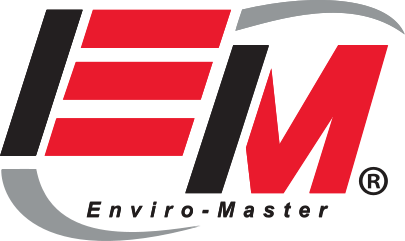Whenever you’re responsible for safe and clean environments, one thing has become perfectly clear: accountability in cleaning and disinfecting requires a process, clear documentation, and proof that it is effective.
1. Cleaning is for the surfaces, disinfection is for the microbes and pathogens left on the surface
Effective cleaning is a thorough removal of surface contaminants such as dirt, grease and oils, food material, makeup, and similar materials that travel on people’s hands and clothing. This prepares the surface for disinfecting with the proper agent and delivery method, as is done in Enviro-Master’ COVID-19 cleaning service.
2. Your detergent and disinfectant work together, choose them wisely.
It’s important to choose detergents and disinfectants that work well together. Take care, too, to avoid mixtures that react and produce noxious or poisonous fumes. Even household chemicals pose that risk, like bleach and ammonia.
3. Think about your environment, the specific contaminants and pathogens. Select detergents and disinfectants for your specific purpose.
Your cleaning agents need to be the most effective choices for your environment. Dirt, grease, sticky substances, non-petroleum based lubricants, human fluids, and other materials each have their own preferred cleaning agents, and those which are ineffective.
4. Know how your disinfectant works. How should it be applied? How long does it take to work? Does it need to be removed after the job is done?
Label instructions and EPA information such as the COVID-19 “List N” specify in detail how each disinfectant must be used to be approved for the job. Requirements include:
- Thickness of the sprayed layer
- Time that it remains undisturbed
- Protective gear for the technician
Enviro-Master’ electrostatic disinfection service layers the disinfectant correctly and uses an electrostatic charge to make it cling to surfaces while it works.
5. Do you have specific targets that are critical to eliminate? Make sure your process will do the job.
Each environment has specific concerns, medical environments in particular. Your disinfectant should be environmentally friendly, but also effective on worst-case pathogens in that environment, such as viruses.
6. Tools of your process. Cleaning products, applicators, disposable supplies, protective gear.
Each disposable and reusable item used in your process should be specified, along with specific product and equipment ordering information. One substitution could spoil your outcome, so be careful.
7. Precise procedures. Motions, distance, timing.
Include a description of each cleaning and disinfecting action for complete coverage, such as:
- Exact motions required
- Distances wiped with each pass
- Spacing of spray equipment from surfaces
- Time that the disinfectant must remain on the surface to be effective
8. Verification. How do you know your process works?
Conduct your process to your specification and submit swab samples to a laboratory to ensure that pathogens are not present. You can also call on disinfection cleaning services such as those from Enviro-Master that are already designed and carefully tested, with workers trained in the process, and results that are already tested.

